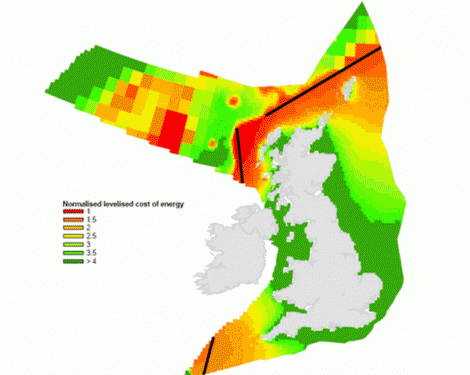News / Best wave energy potential offshore
WAVE energy farms out in the open Atlantic Ocean and hundreds of kilometres in length could generate around 11 per cent of the UK’s current energy demand, a new study by the Carbon Trust has said.
By far the most productive and cost-effective sites to develop would be at the edge of the Rockall Trough, up to 150 kilometres to the west of Lewis and Uist, the south west approaches of Cornwall as well as the continental shelf areas the northwest of Shetland.
The authors of the 66-page UK Wave Energy Resource report say that areas some 100 kilometres offshore could generate electricity some 50 per cent cheaper than sites currently developed.
They estimate that of a theoretical resource of 230 terawatt hours (or 230,000,000,000 KWh per year) between 32 and 42 TWh (less than 20 per cent) could realistically be extracted.
This would equate to over 10 gigawatt of installed wave energy capacity and requires floating wave farms totaling around 500 kilometres in length.
The report says that using today’s technology energy could theoretically be extracted from these sites at 20-25.3p/kWh. The cost of wave energy would reduce further as the industry develops at scale.
Nearshore wave devices have fewer sites to choose from, but could also make a contribution. The realistic potential for Shetland is quoted at 51 megawatt installed capacity.
Dr Stephen Wyatt at the Carbon Trust said: “This new research identifies the major wave frontages for commercial development in the coming years.
“If we can continue to innovate to prove the technology at scale and to bring down costs then there is every reason to believe that wave power can be providing a significant contribution to our energy needs out to 2050.”
Reacting to the report, published on Wednesday, director of WWF Scotland Dr Richard Dixon said: “This study underlines the potential for Scotland to literally rule the waves when it comes to harnessing the power of our seas.
Become a member of Shetland News
“There are more wave power machines under test in Scottish waters than anywhere else in the world. Many of these have the potential to be of global significance in our efforts to tackle climate change and offer huge export benefits too.
“Alongside energy saving measures, marine renewables will have a critical role to play in helping Scotland reduce climate emissions as we phase out polluting fossil fuels and nuclear power.
“With careful planning we can harness Scotland’s huge wave and tidal energy to help cut our climate emissions, while safeguarding the nation’s tremendous marine environment.”
Become a member of Shetland News
Shetland News is asking its many readers to consider paying for membership to get additional features and services: -
- Remove non-local ads;
- Bookmark posts to read later;
- Exclusive curated weekly newsletter;
- Hide membership messages;
- Comments open for discussion.
If you appreciate what we do and feel strongly about impartial local journalism, then please become a member of Shetland News by either making a single payment, or setting up a monthly, quarterly or yearly subscription.



























































